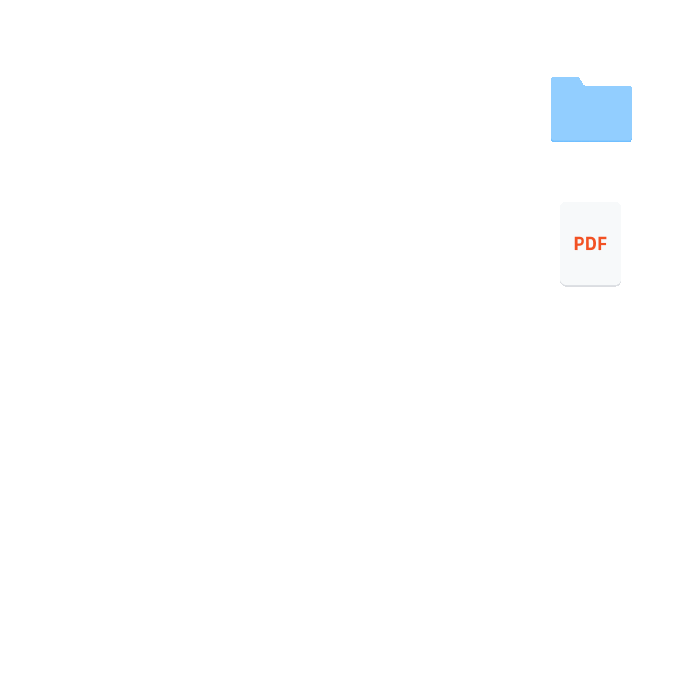Skip to a section
- Overview of cloud storage vs external hard drives
- Best options for freelancers and businesses
- Best storage for universal access, data security and syncing
Cloud storage services and external hard drives: A quick overview
What is an external hard drive?
An external hard drive connects directly to your computer and doesn’t require an internet connection. There are spinning hard disk drives (HDD), as well as solid state drives (SSDs), which offer faster access to your data. They can be as small as a thumb drive or as large as a server – and they differ from internal hard drives in a few ways:
- An internal drive is integral to your machine and is not removable without opening the computer
- Internal drives store the operating system, applications and other things essential for your computer to work
What is cloud storage?
Cloud storage also uses physical data storage, except your content is stored on servers managed by your cloud storage provider. You access your content using an app, desktop client or web browser.
One thing to note: cloud storage and cloud backup are similar – but not the same.
- Cloud storage keeps your files on remotely accessible drives – they are easy to access, edit or update at any time.
- Cloud backup creates a backup of your computer and external drives at regular intervals. Then you can restore your data and your devices from the cloud in the event of a hack, malware attack, device loss or hard drive failure.
Read our guide to ‘Cloud Storage vs Cloud Backup’ for more information.

Is an external hard drive or cloud storage better for my business?
It all depends on your business, your needs and what you plan to do. Check out the following examples to help you decide on the best option.
You’re a freelancer
If you’re a freelancer, you probably want freedom and flexibility. With a cloud storage solution like Dropbox, you can create, access, edit and sync files automatically across all your devices.
Dropbox Professional offers 3,000 GB for a single user and is perfect for emerging entrepreneurs and freelancers. One very cool thing about this plan is that you have no limits on device linking! Plus, if you travel or work on the go, you never have to worry about losing or breaking an external drive.
You run a small business
If you run a florist’s shop, pet shop or anything in a brick-and-mortar setting, you can manage data on an external hard drive yourself. Just be sure to have a backup plan like the ‘3-2-1 Backup Strategy’.
You can use cloud storage to share files with your team or clients. Or store files you’ll need to access on the go. Plus, you can back up your computers and on-site hard drives for added safety. Try a Dropbox Basic account, which has 2 GB of free storage. Or check out our team plans if you have 3 or more employees.
Managing a digital business means you have different priorities for access, backup and storage. So choosing cloud storage, like a Dropbox Professional account, might be a better option.
You’re running a medium- to large-sized company
The scalability of cloud storage is a big win for companies looking to grow. A Dropbox Standard plan gives you 5,000 GB of cloud storage and 3+ users.
You’ll get security monitoring, admin tools and 180-day file recovery – everything you might need. Our business plans are packed with intuitive file-sharing and privacy tools, too. Best of all? You’ll have zero trouble from external hard drives!
Choose your Dropbox plan today
Cloud storage vs hard drives: Head-to-head
Universal access
You can only access an external hard drive with a device that physically attaches to it, or potentially via a local network. There’s no ‘universal access’ unless you’re physically near the drive.
With cloud storage, all your content is available across all your connected devices. As long as you have an internet connection, your files are accessible whenever and wherever you want them. And keep in mind, you can set up offline access to open certain files with or without internet access.
Data security
A huge priority for many businesses, security is increasingly becoming the issue for all kinds of data storage. With Dropbox, you get state-of-the-art 256-bit AES encryption – other providers vary.
Hackers can’t access an external hard drive unless you attach it to your computer. Still, someone can steal it – and if there’s a fire or the drive fails, you might lose all the data. Not exactly secure.
With cloud storage, everything is recoverable – you can recover lost files, undo deletions and Rewind your entire account in case of a malware attack.
Data syncing
Sync technology is great for automating backup tasks, updating new file versions and doing other time-consuming chores. With cloud storage, data syncing runs in the background while you work.
For an external hard drive, you have to manually sync data. Also, if you update a file via another device, you will have to update the external drive too – with cloud storage it’s automatic.
The advances in file hosting and cloud storage of recent years reveal a new landscape. Most people can use cloud storage and backup for work, school and university, or business without any worry.
